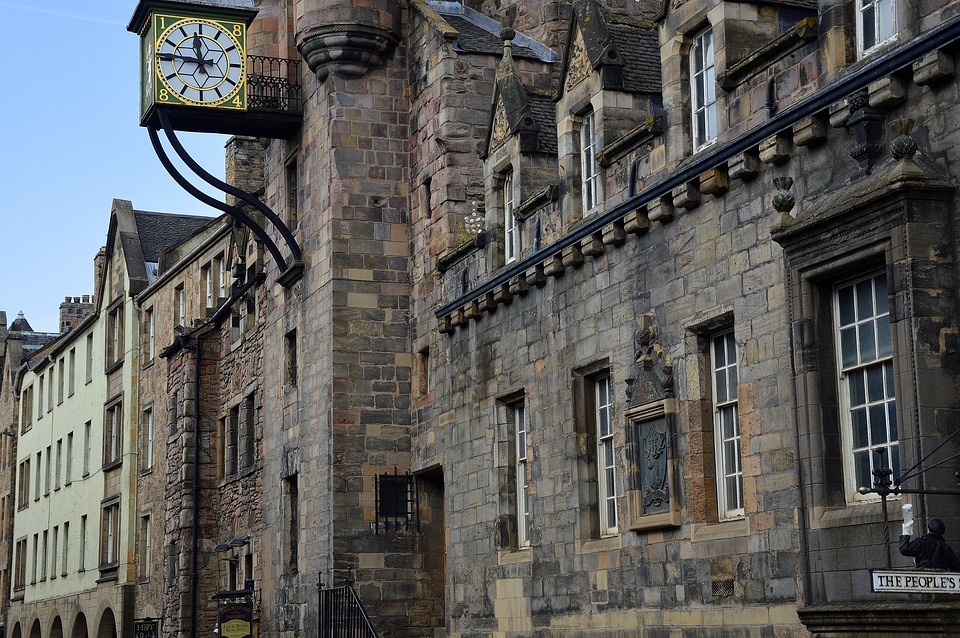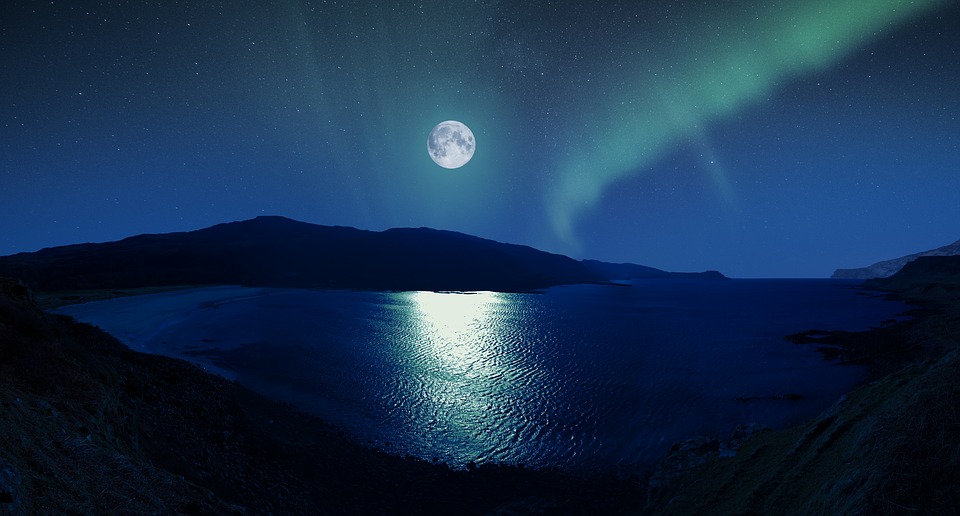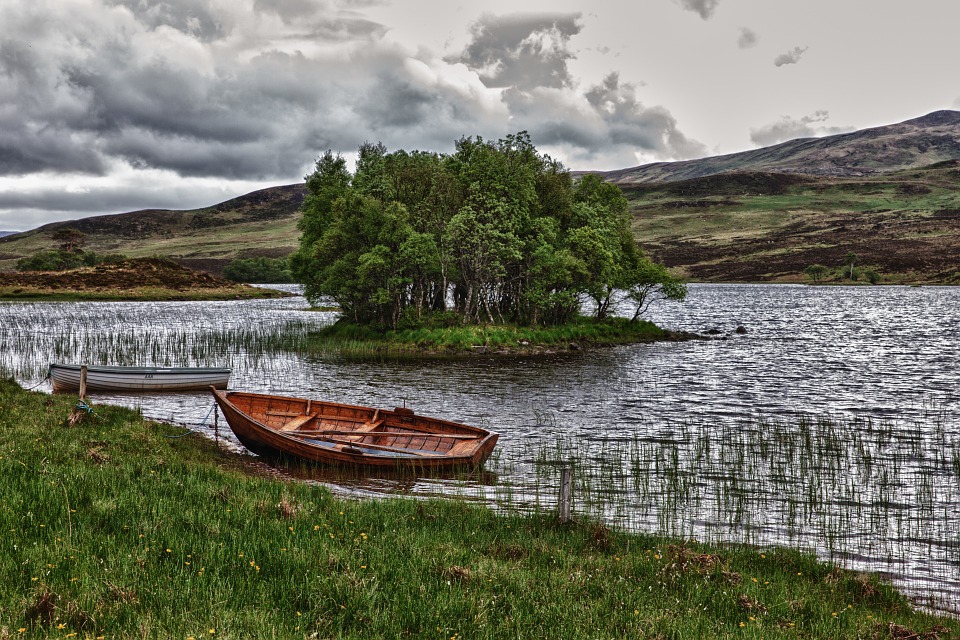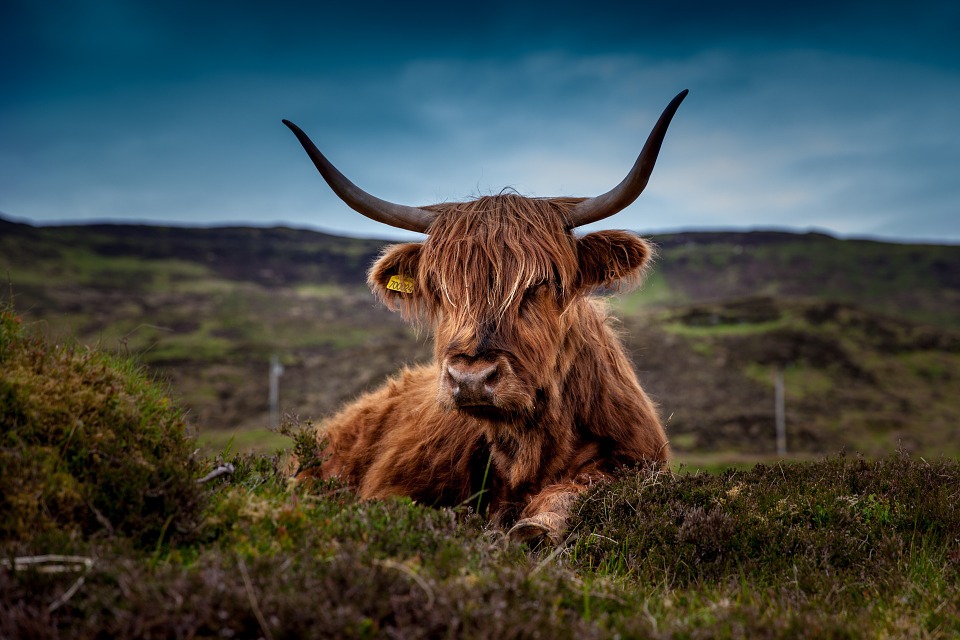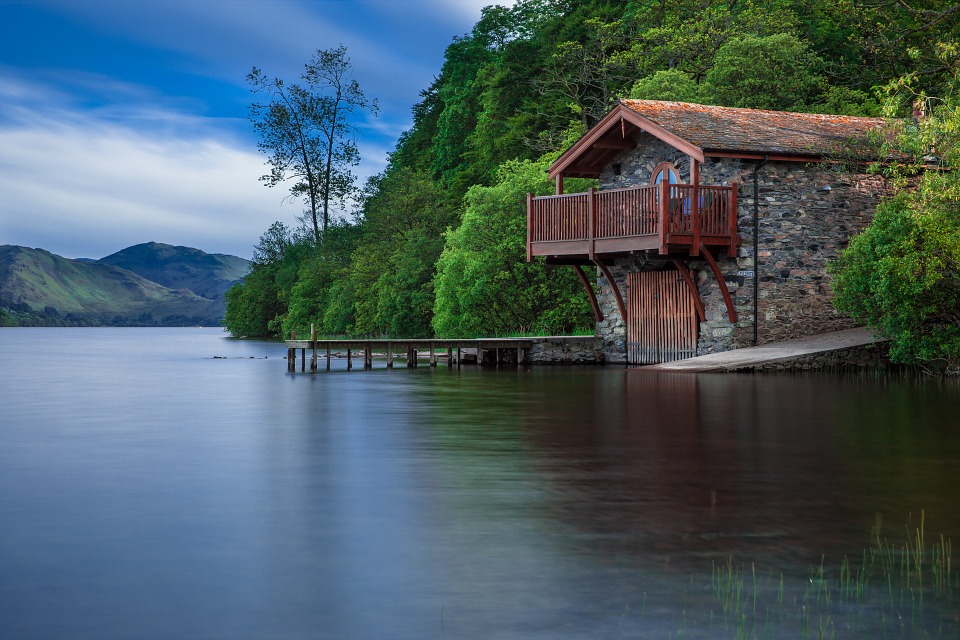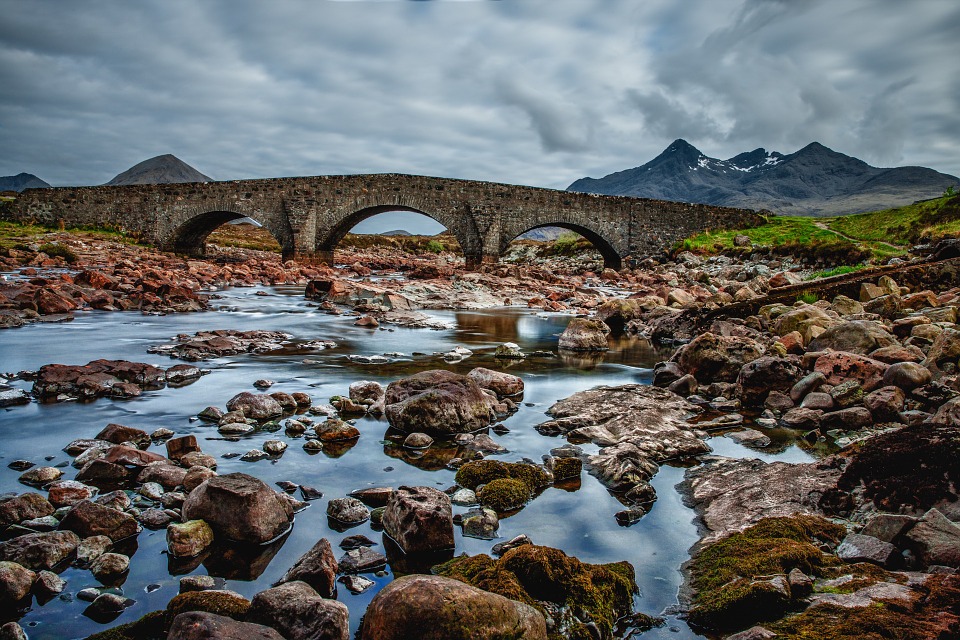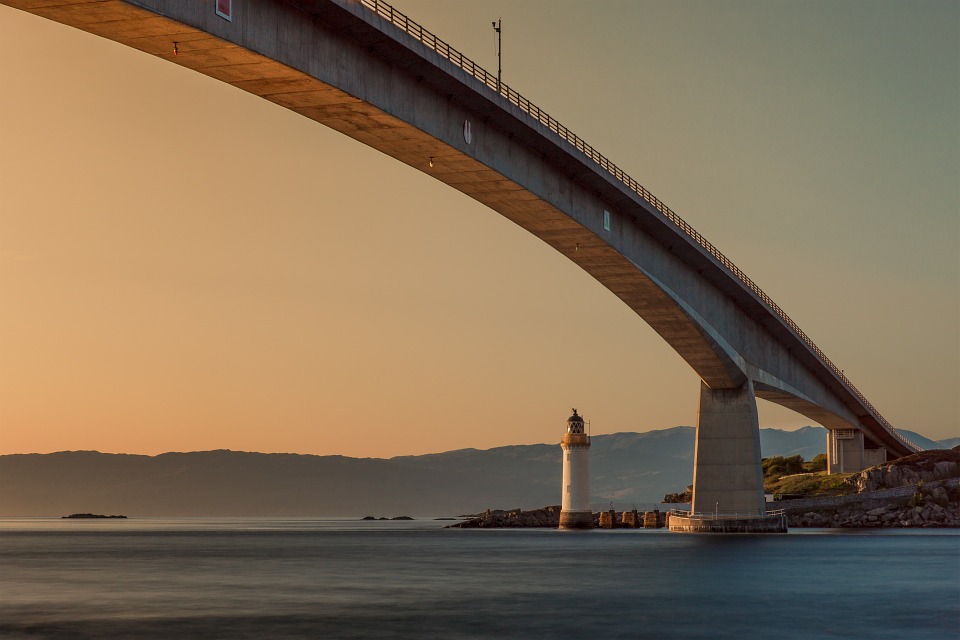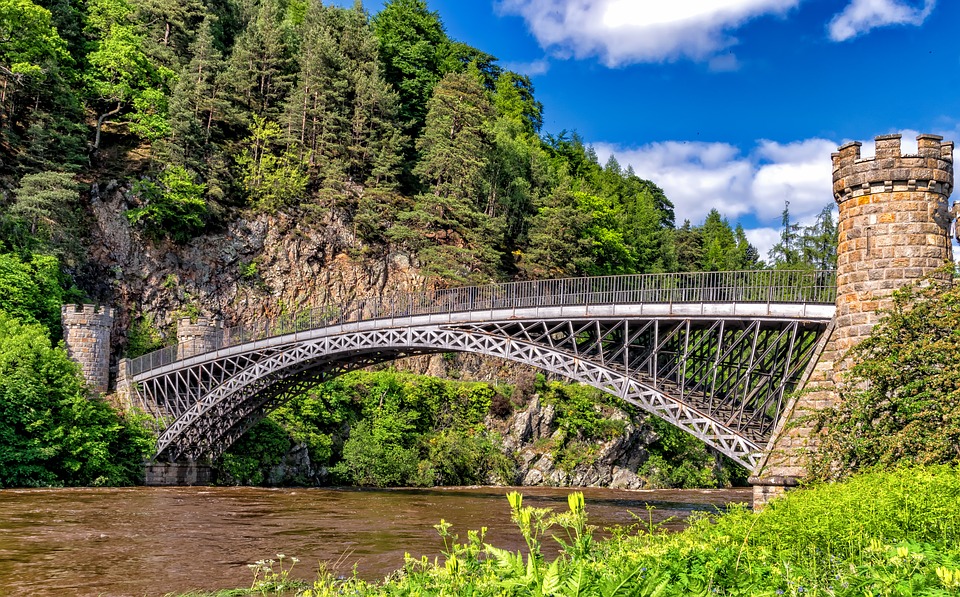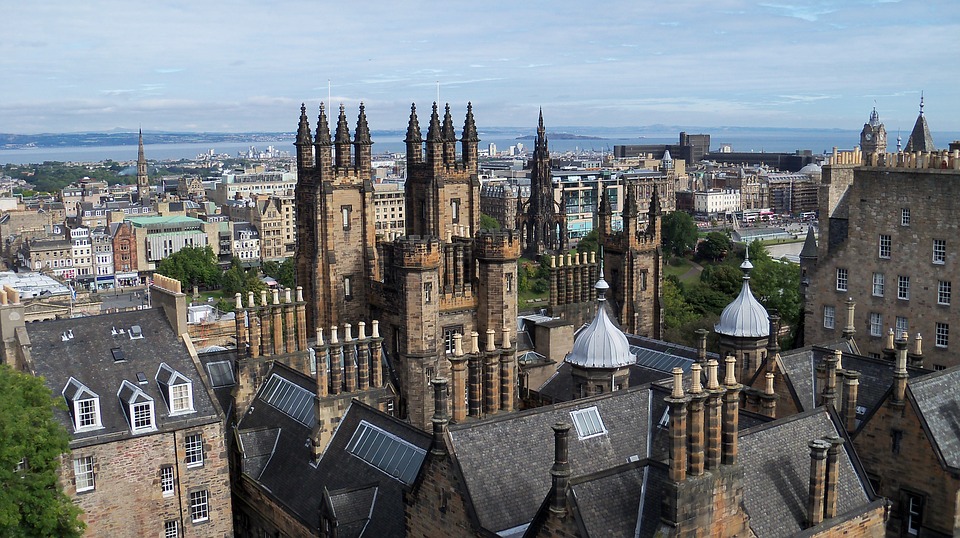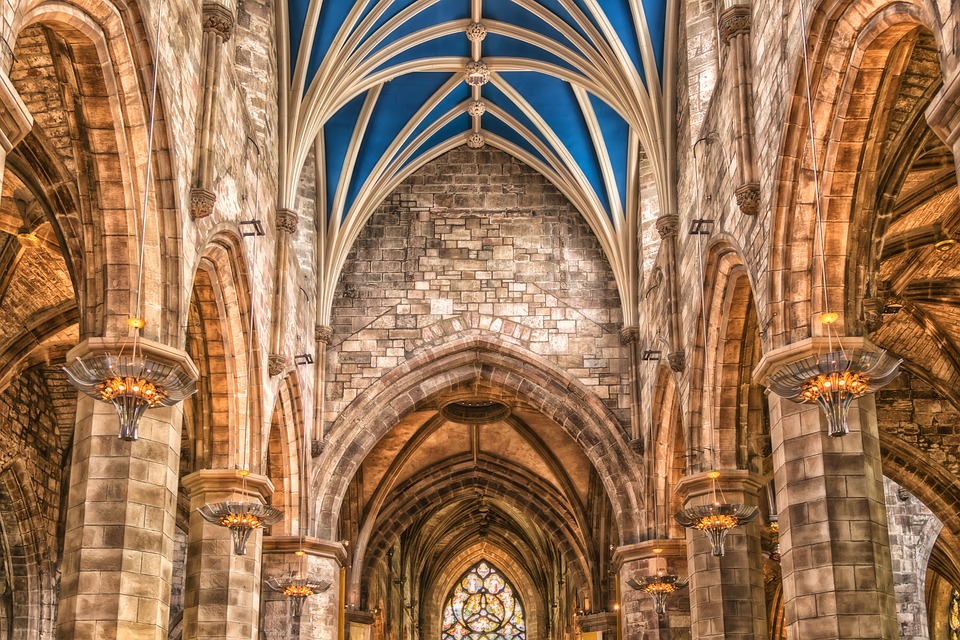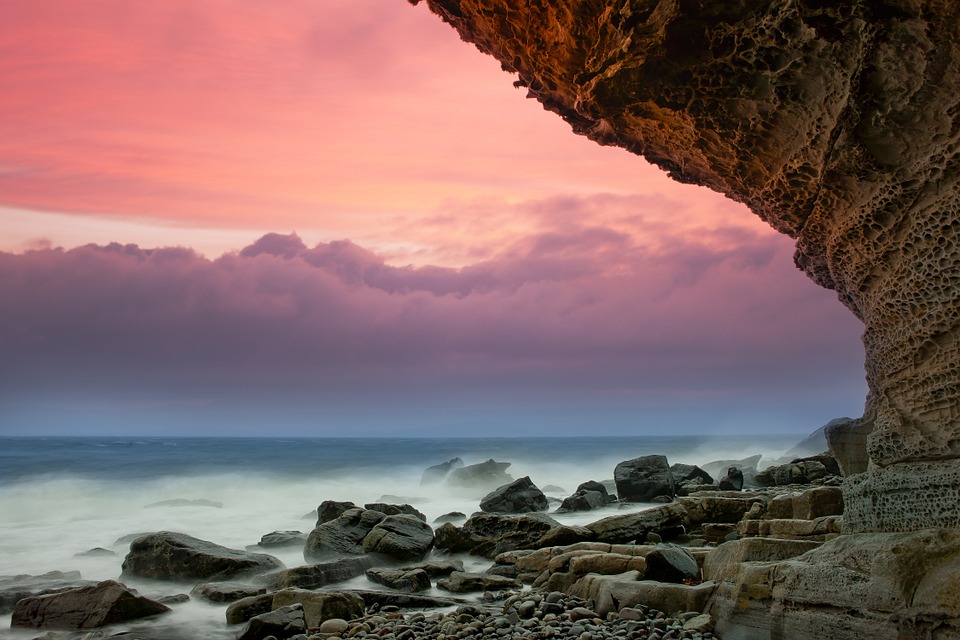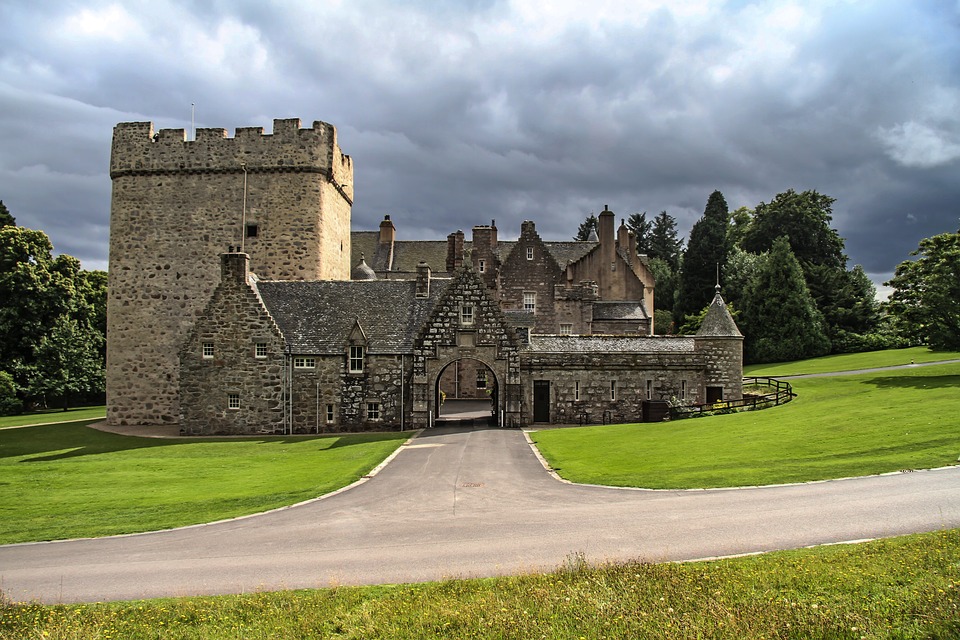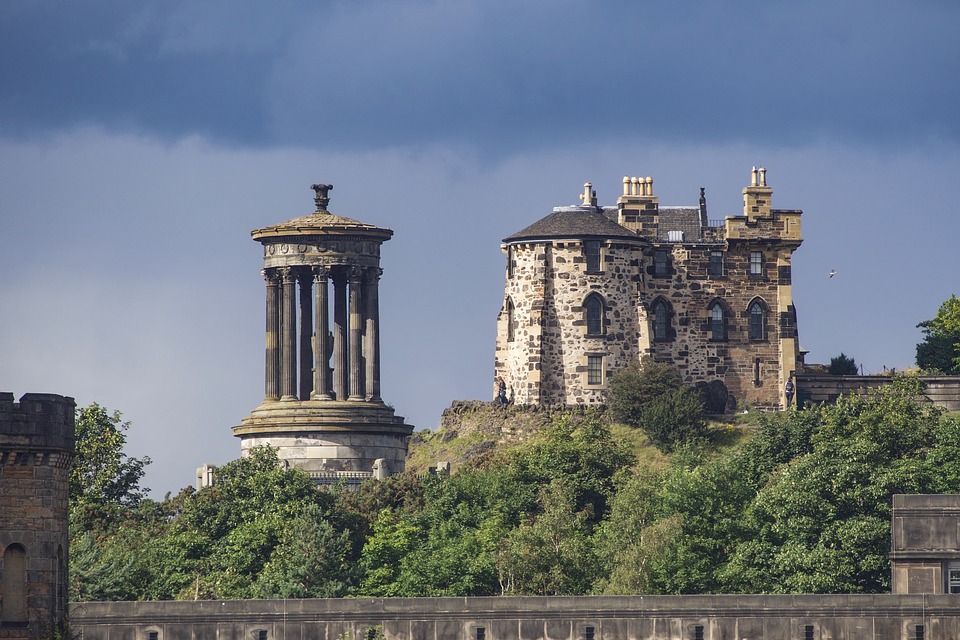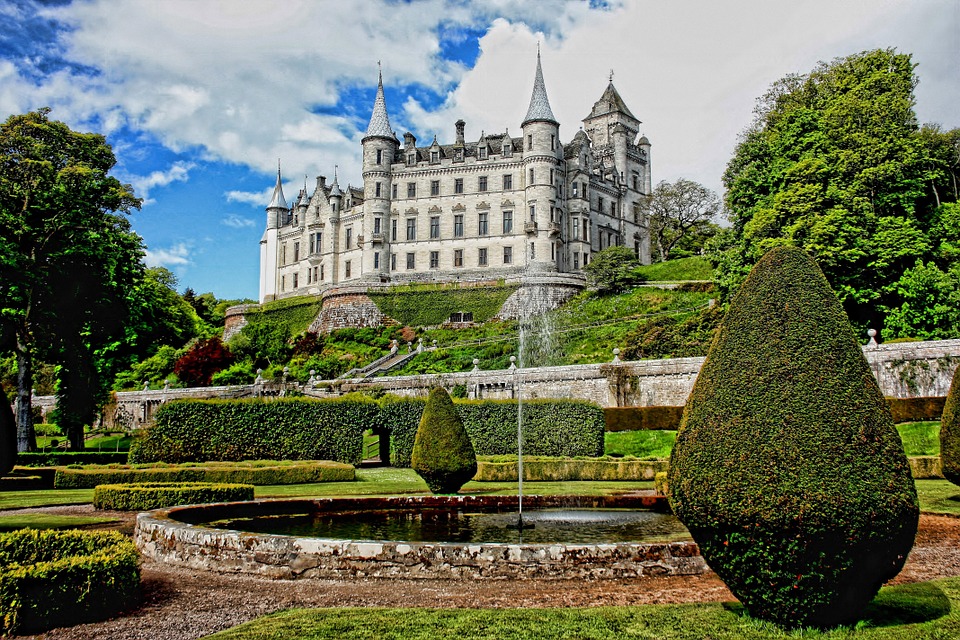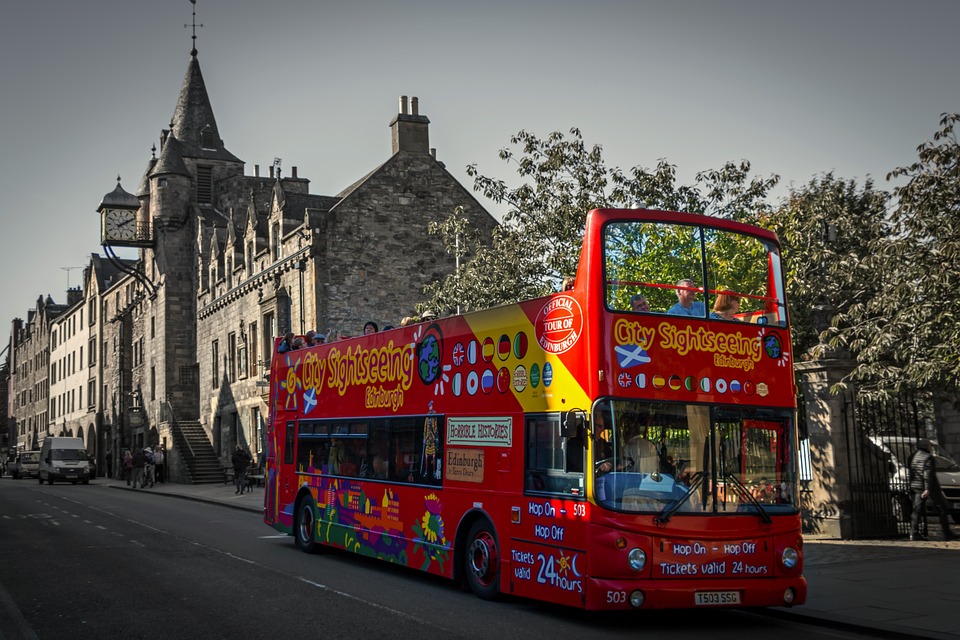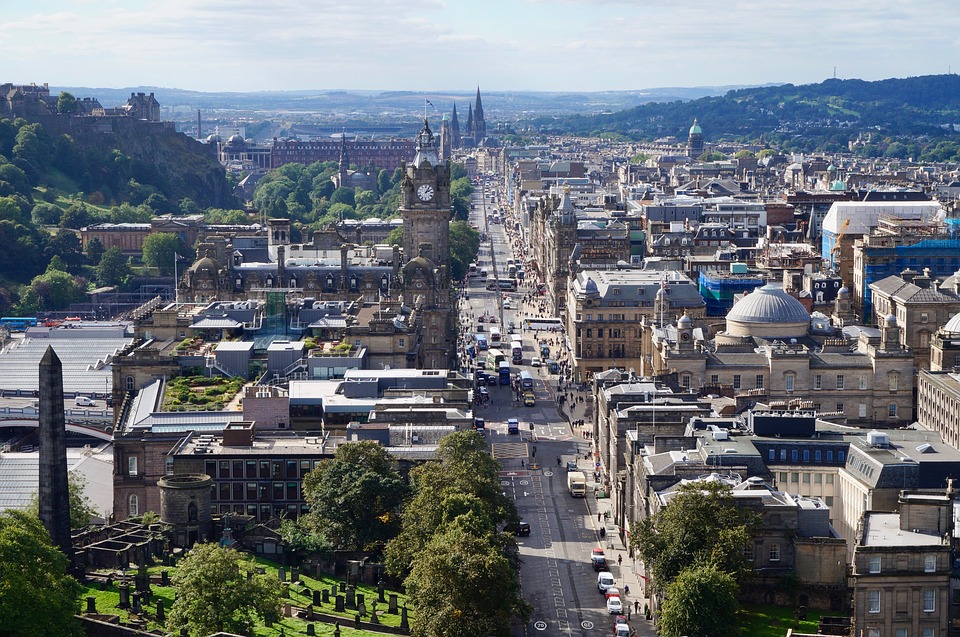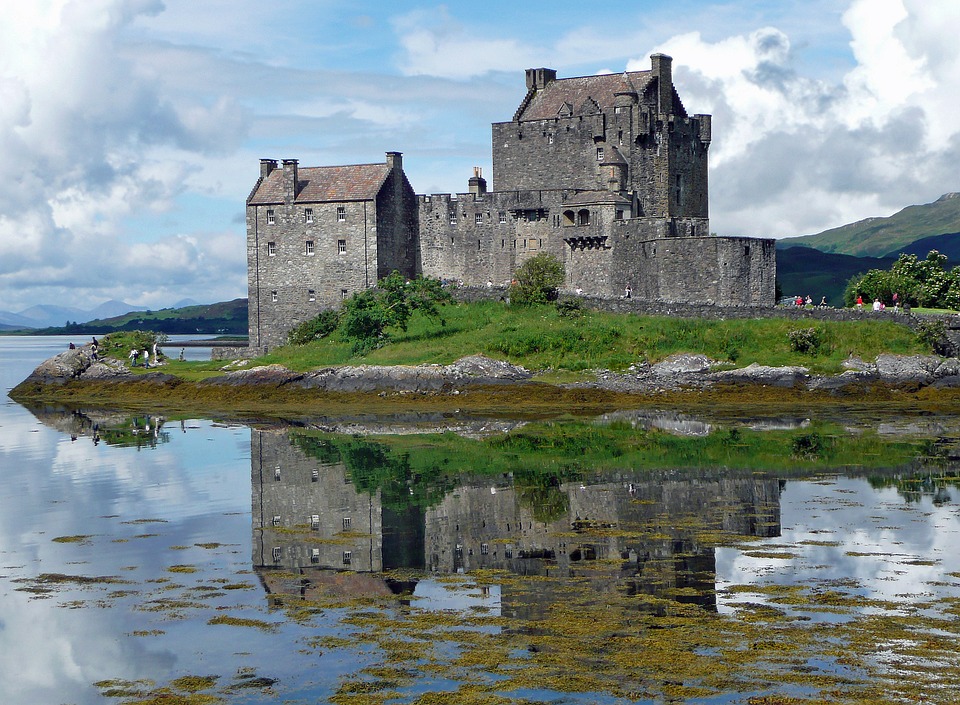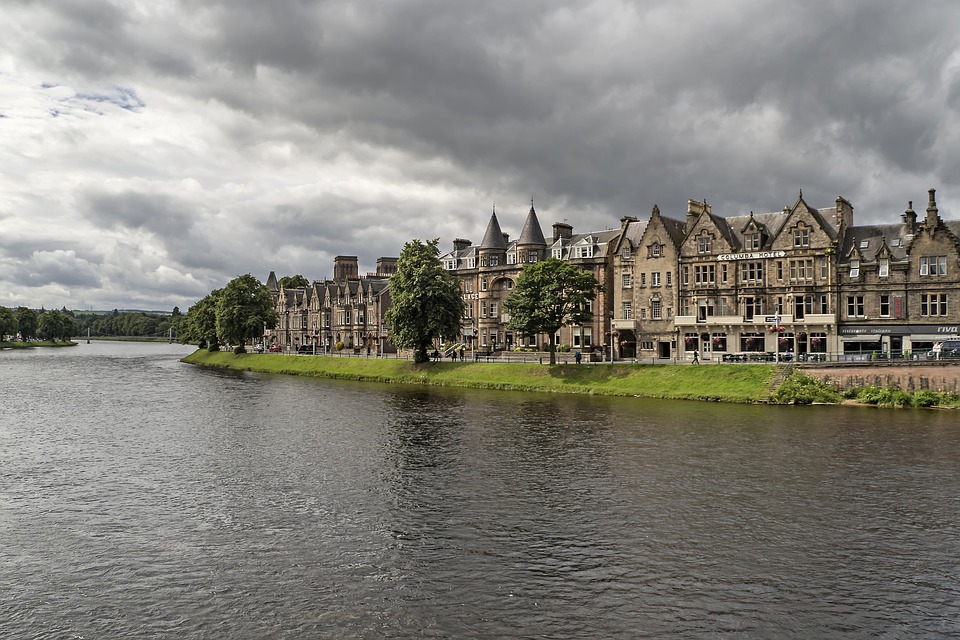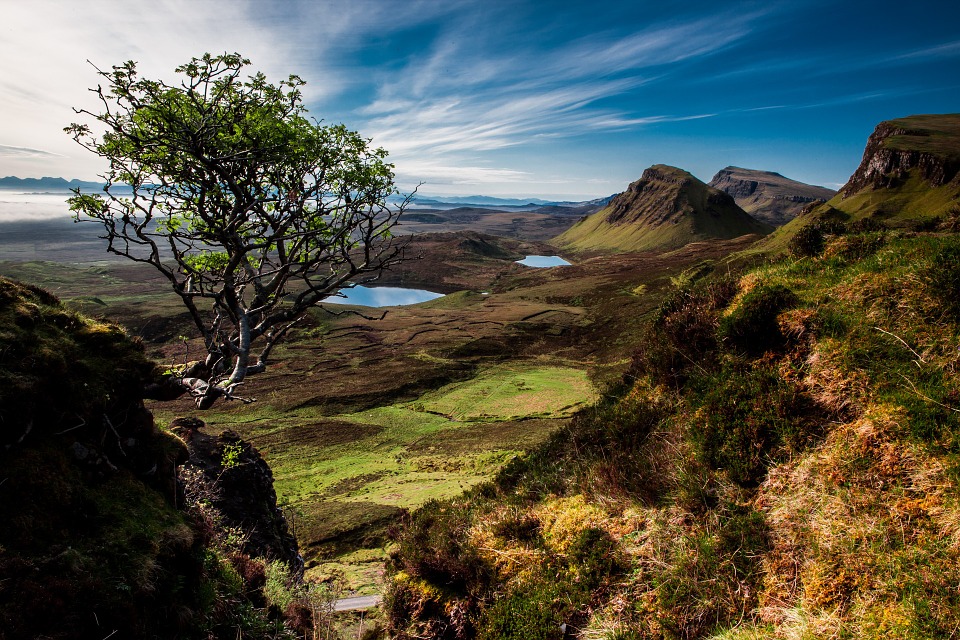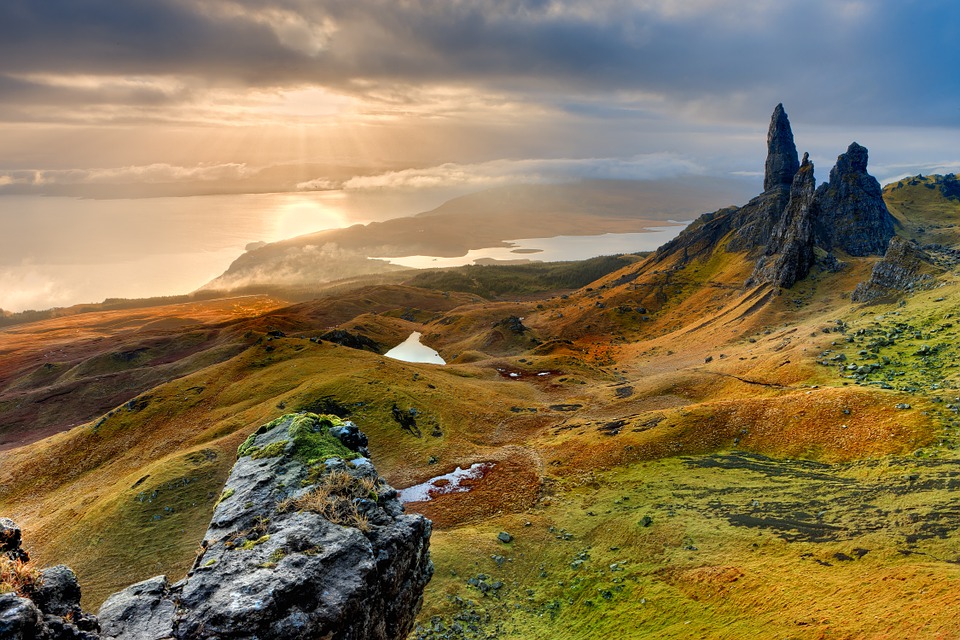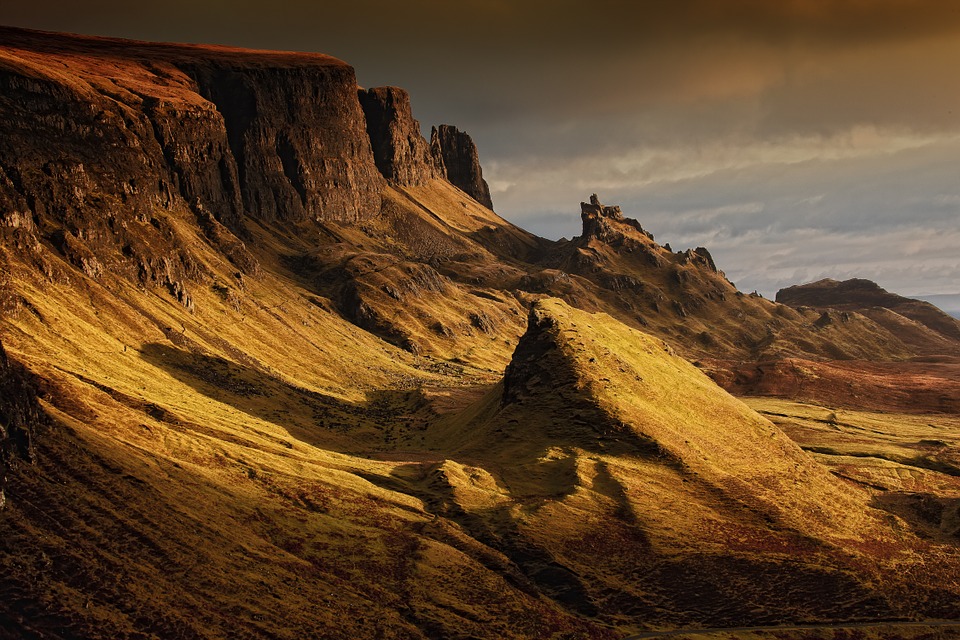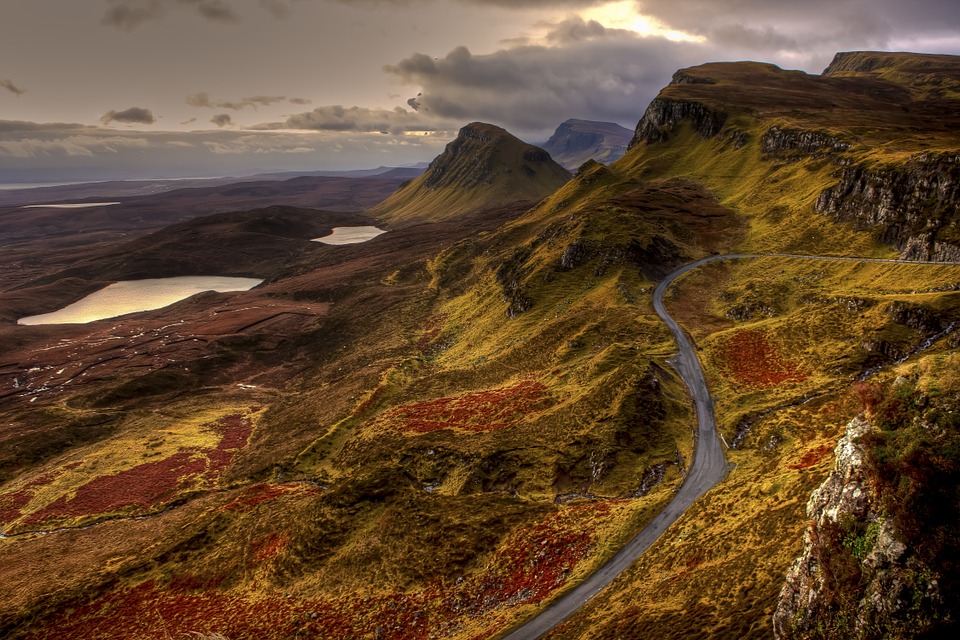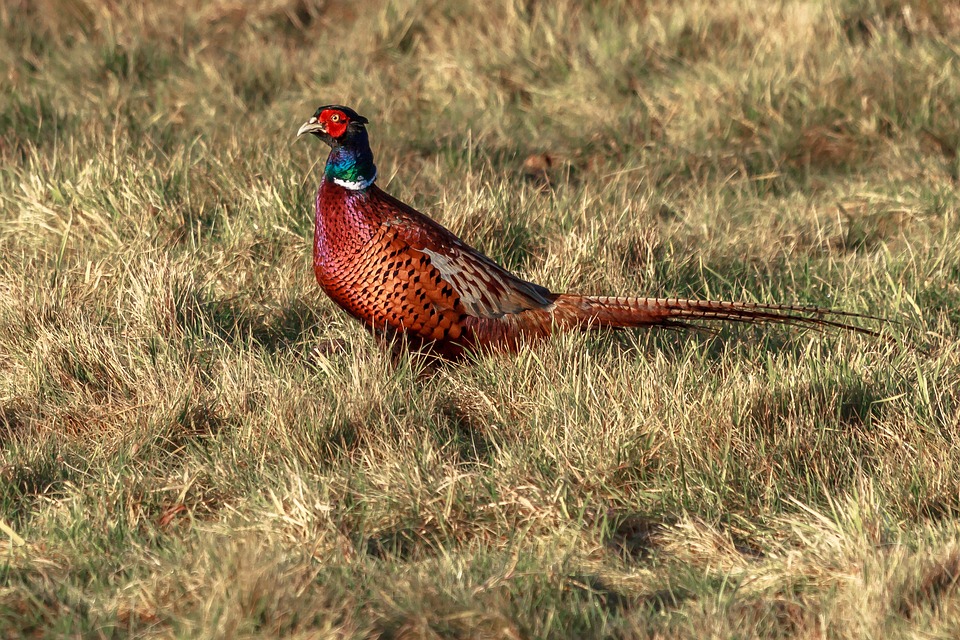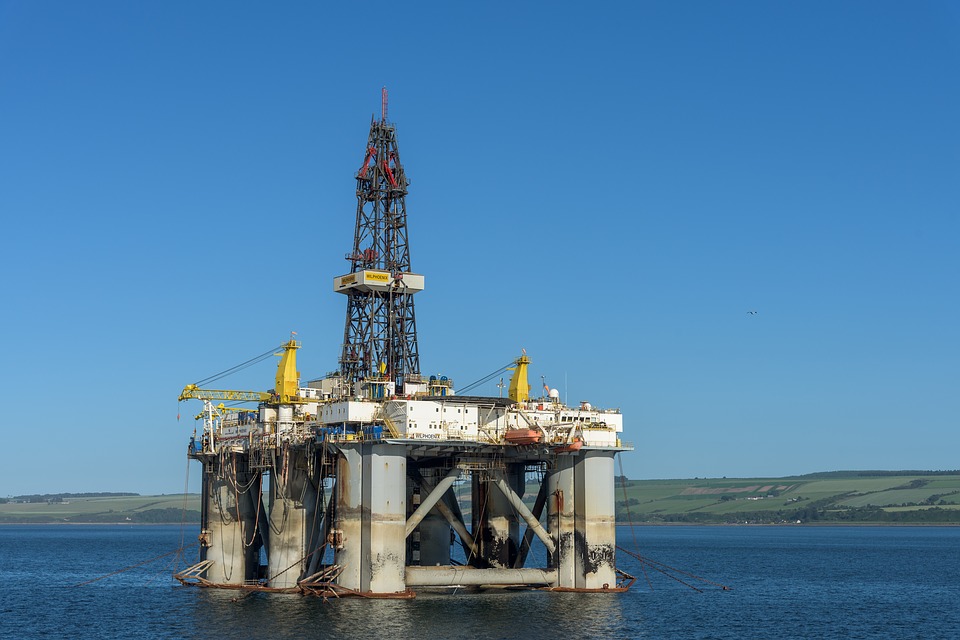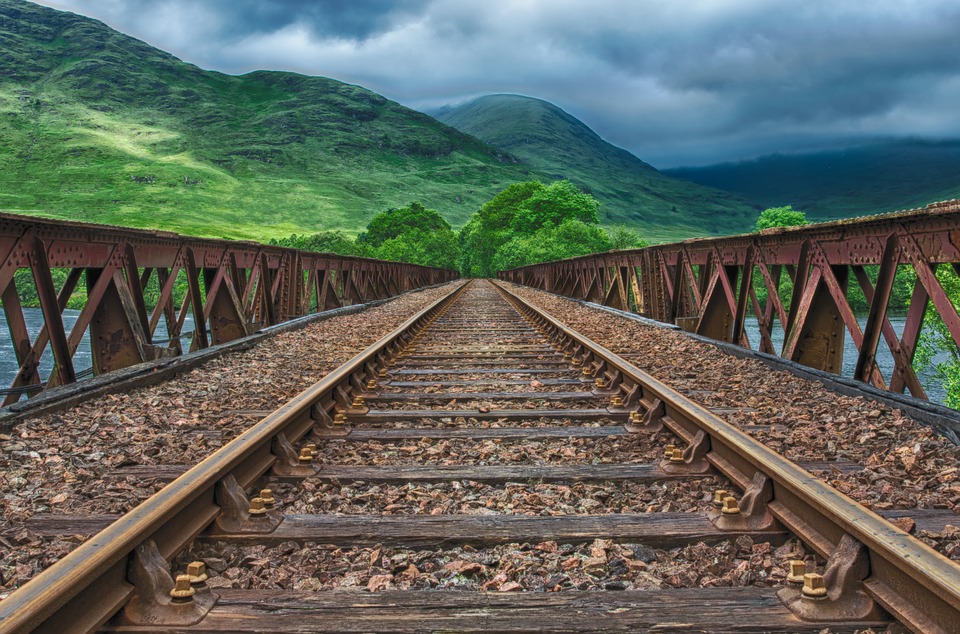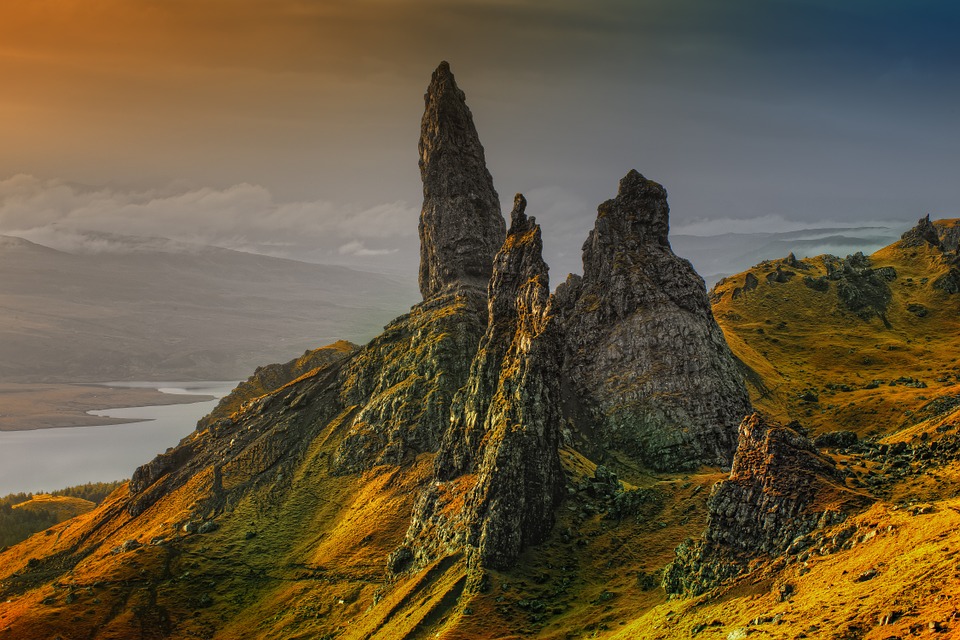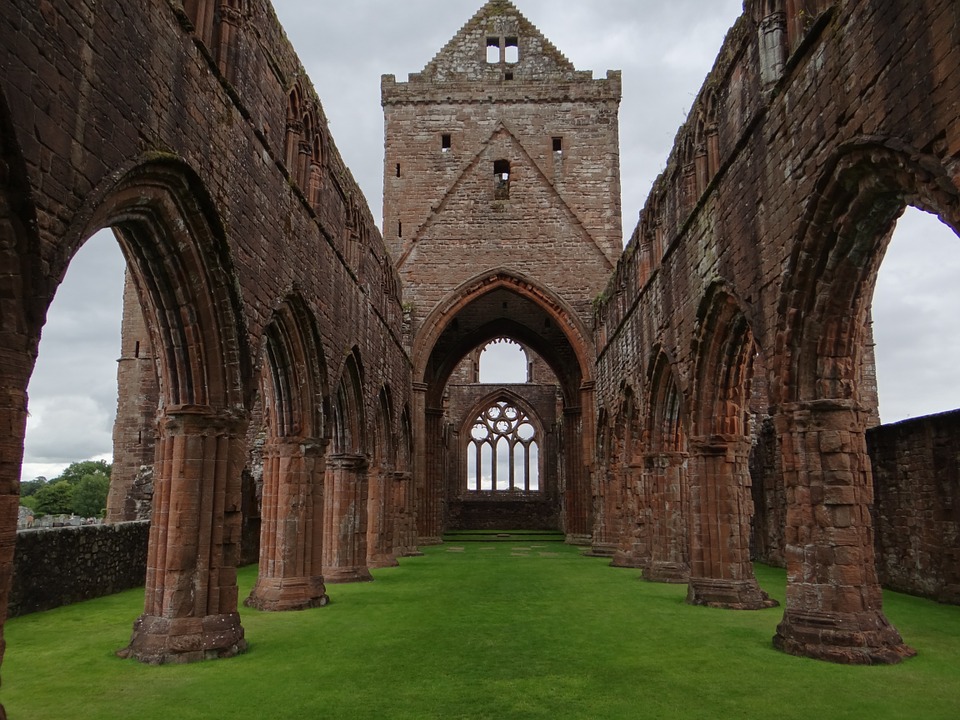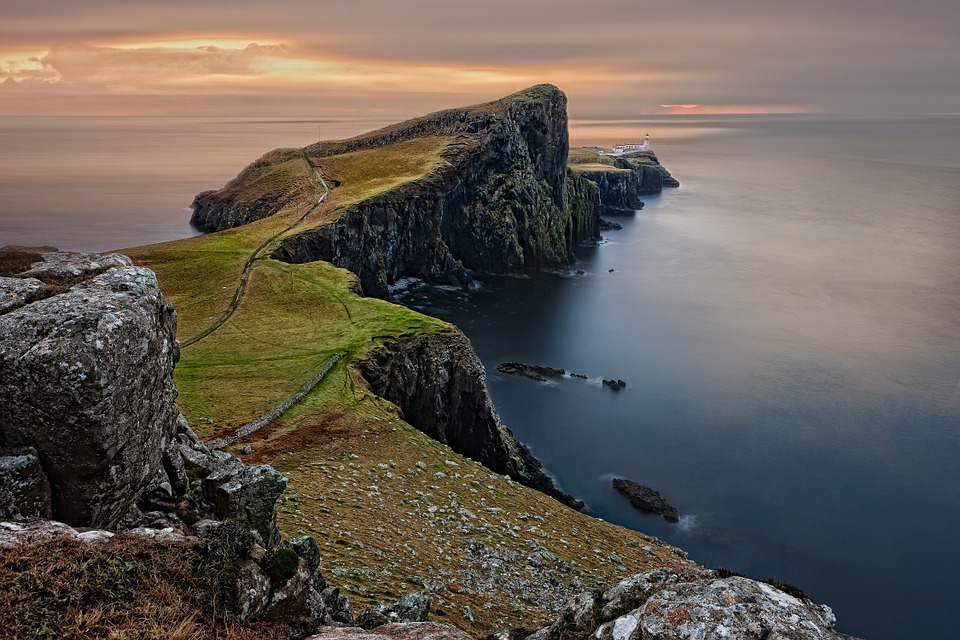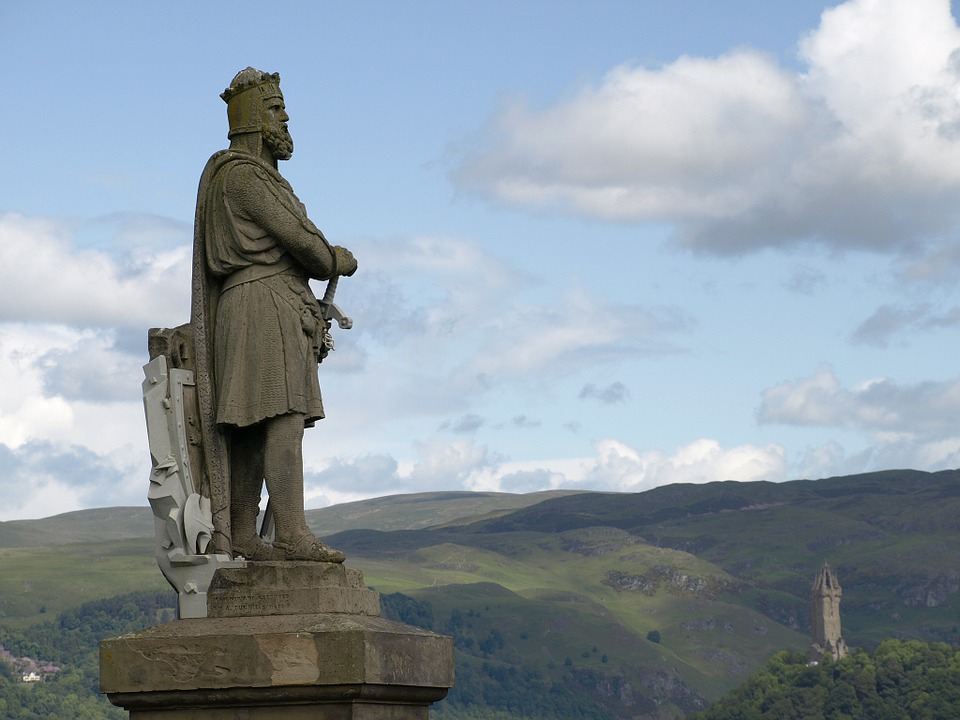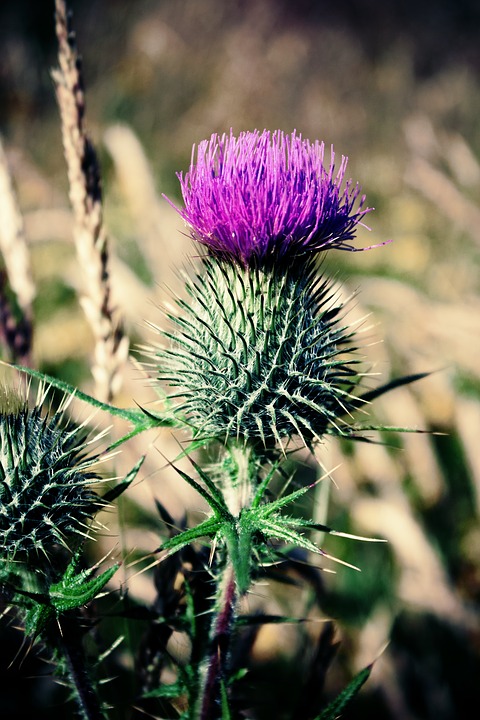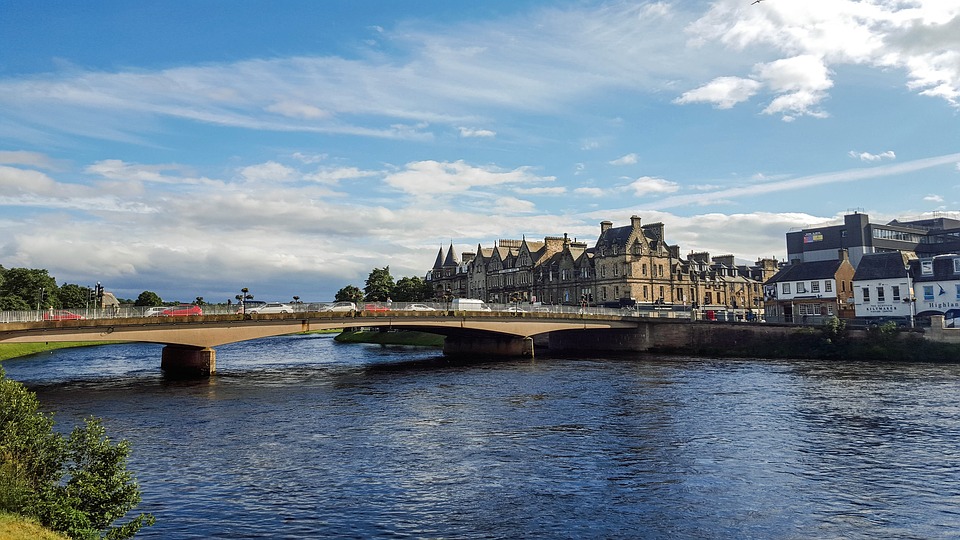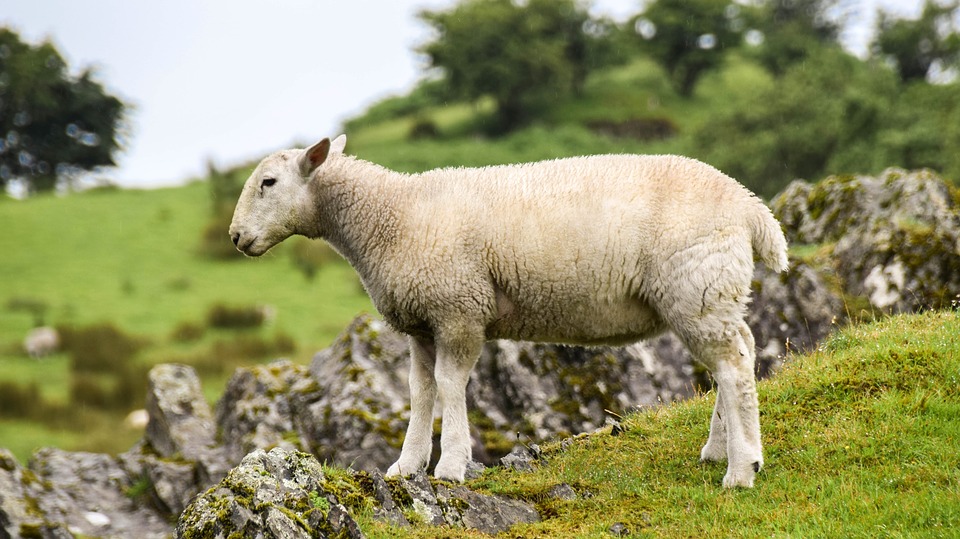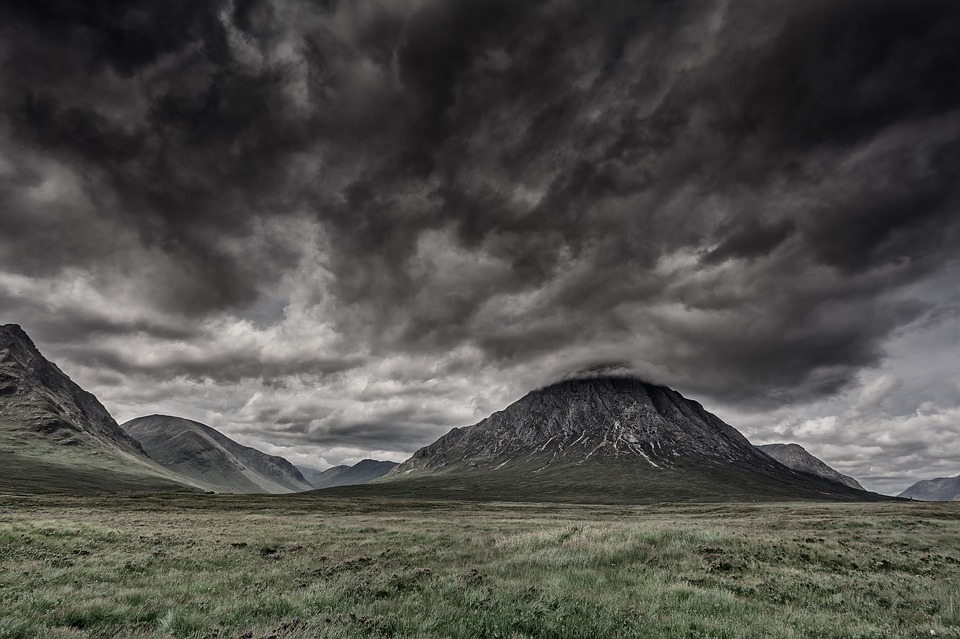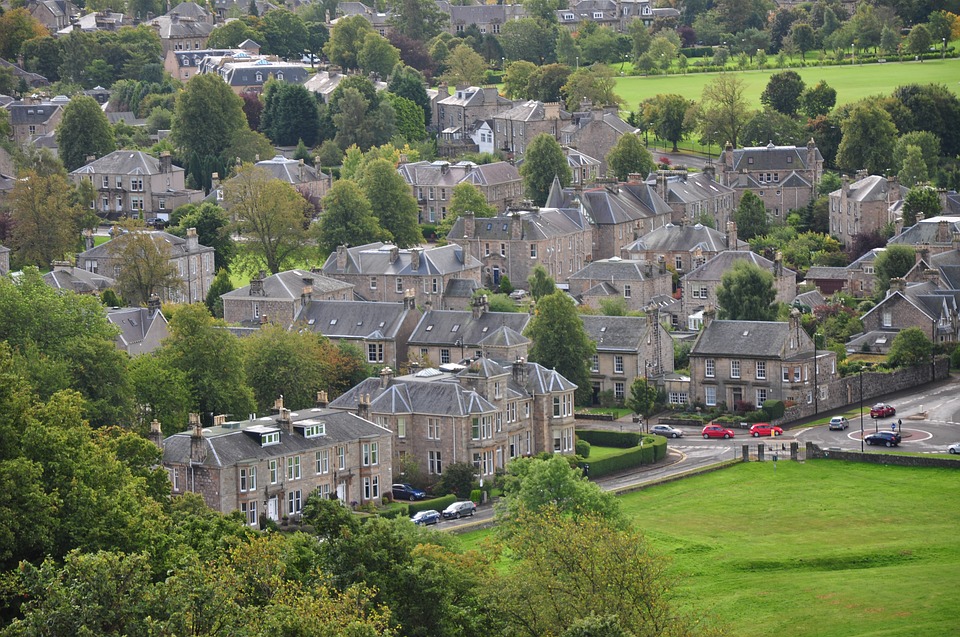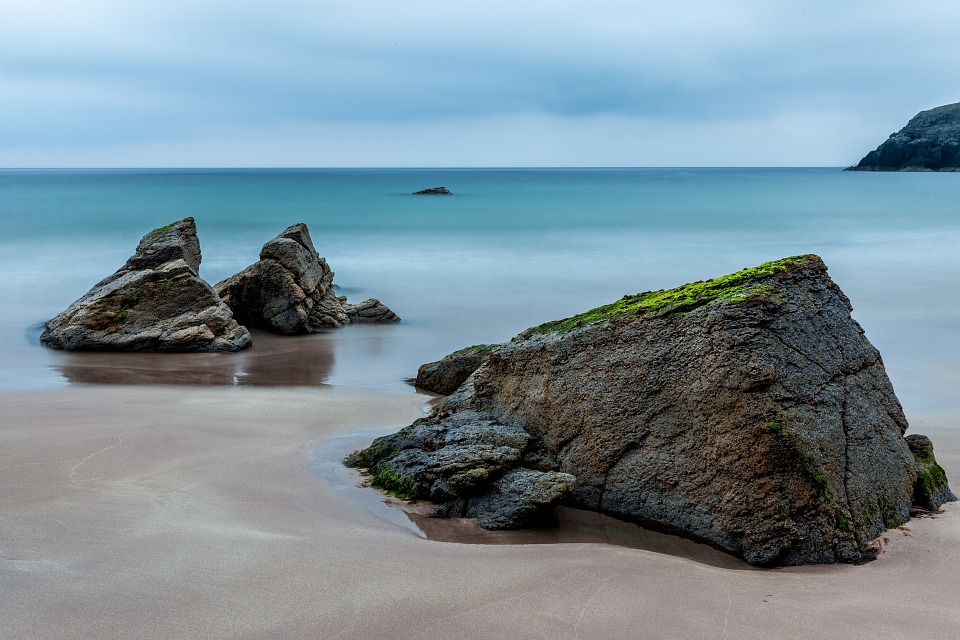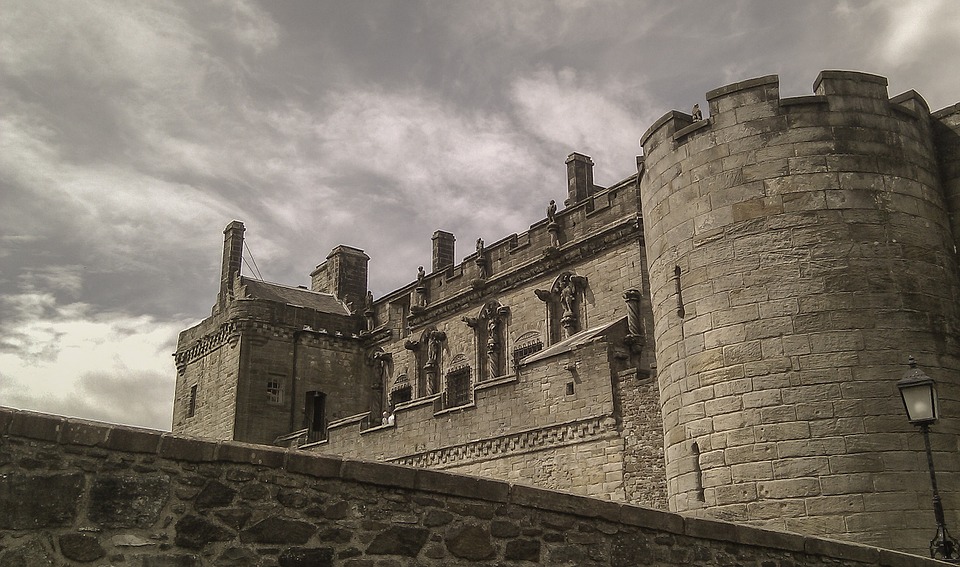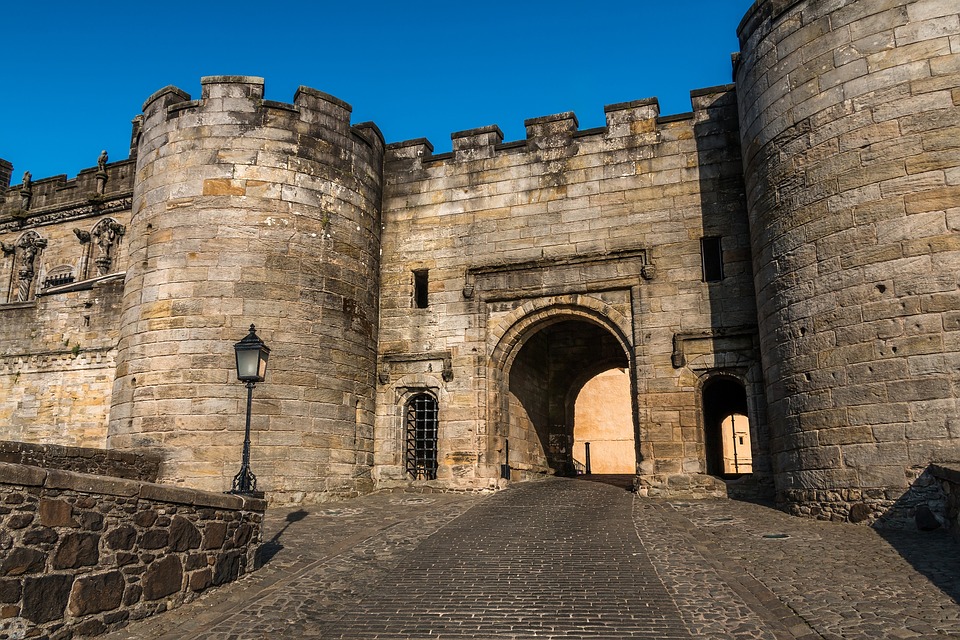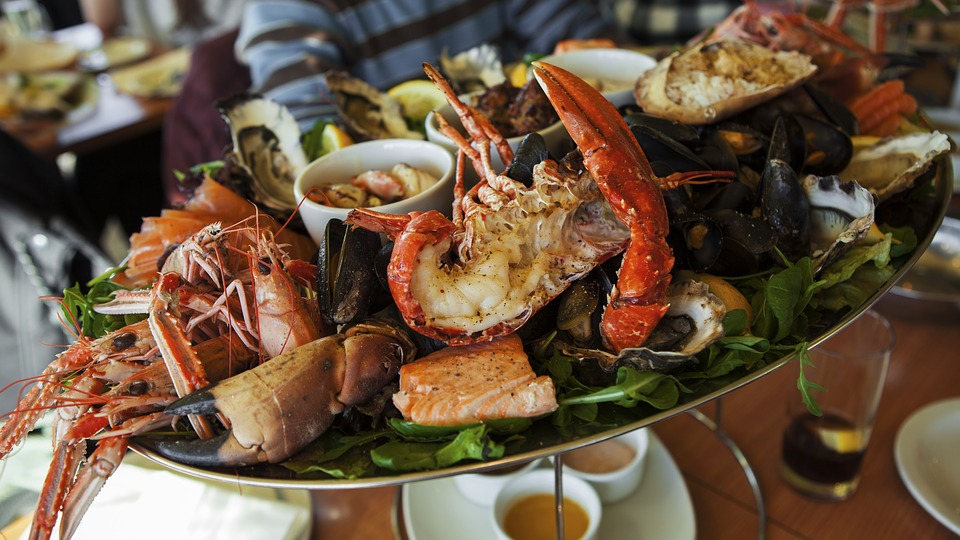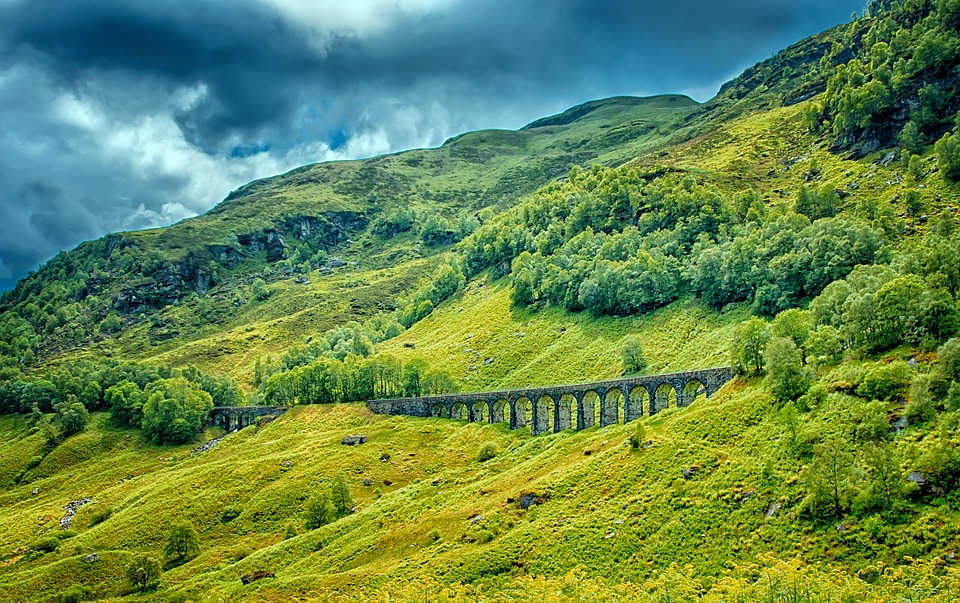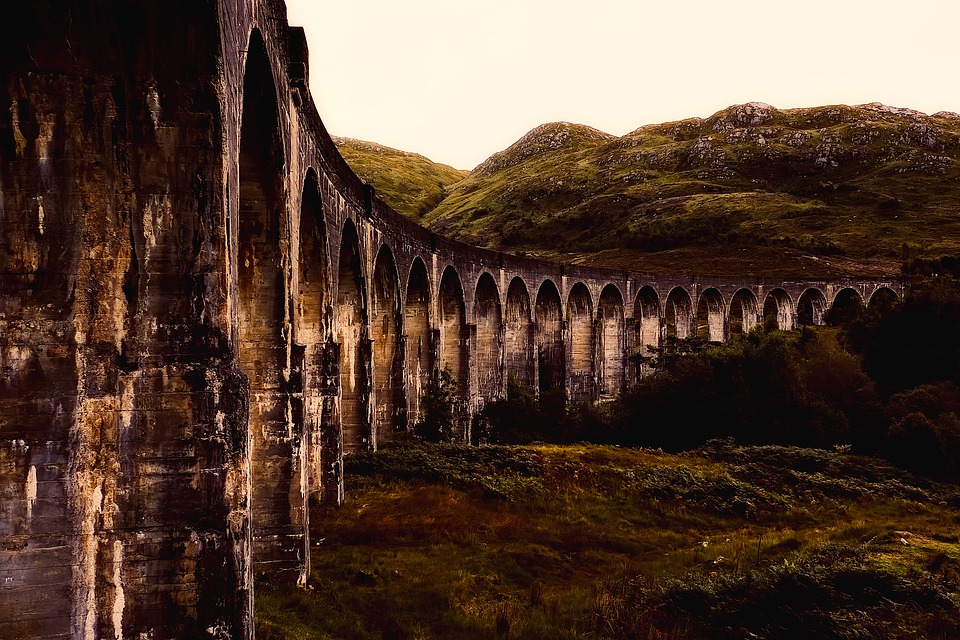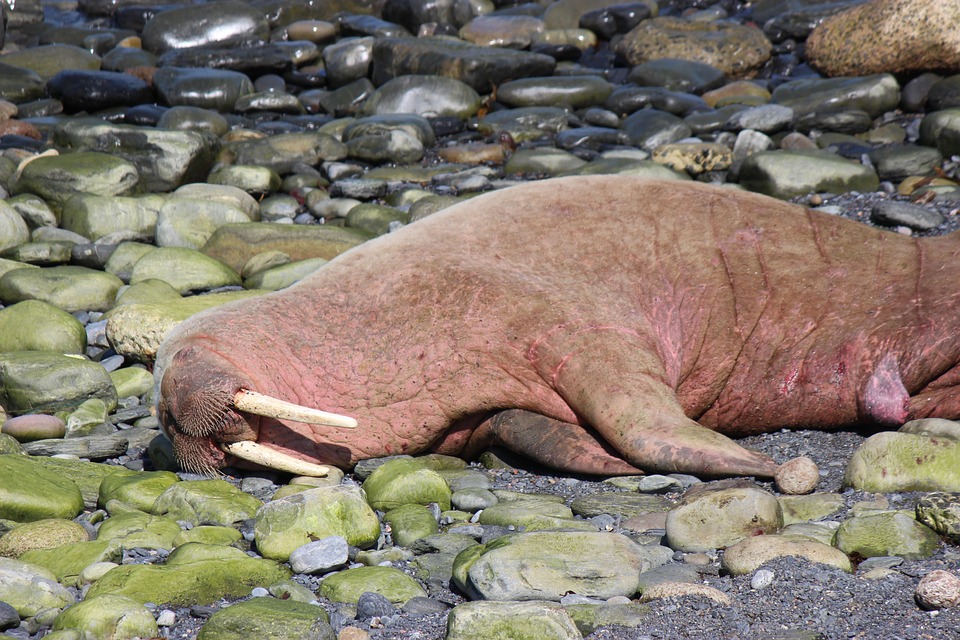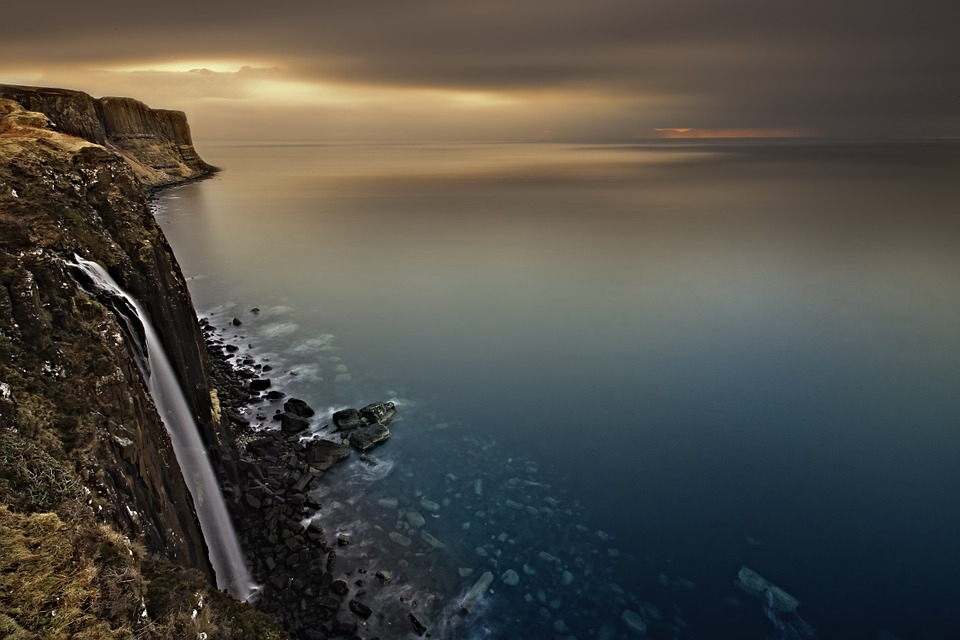Scotland
(Latin: Scotia (land of the Scots))

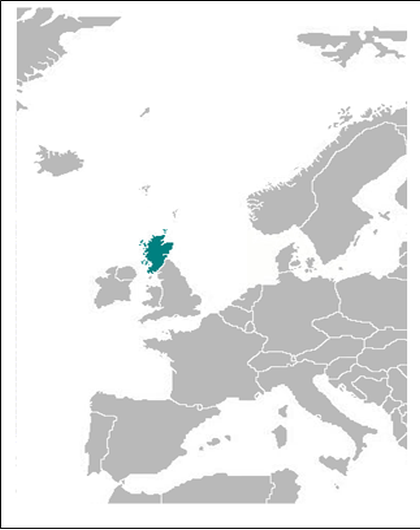
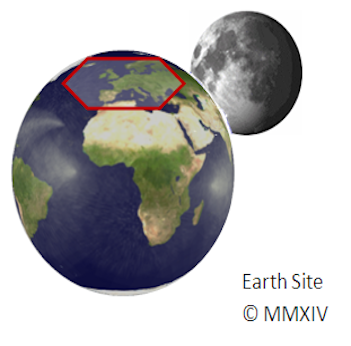
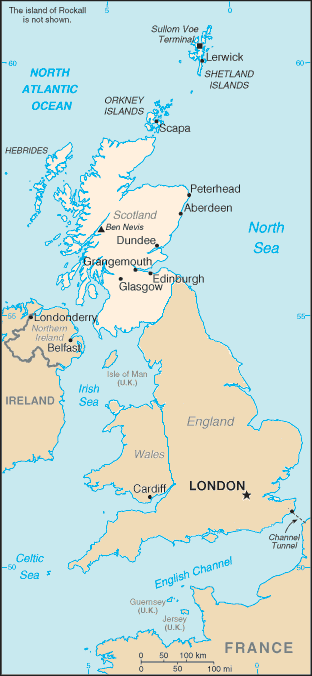
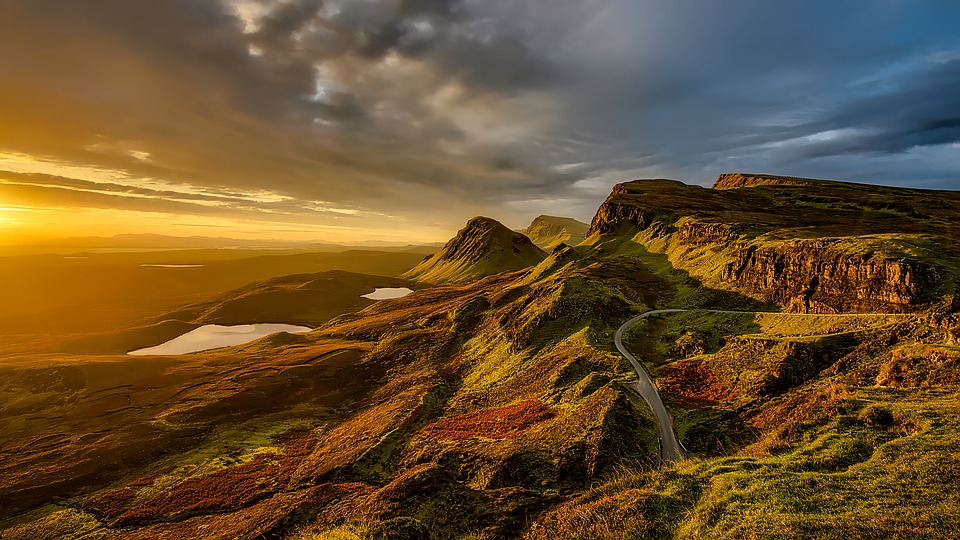
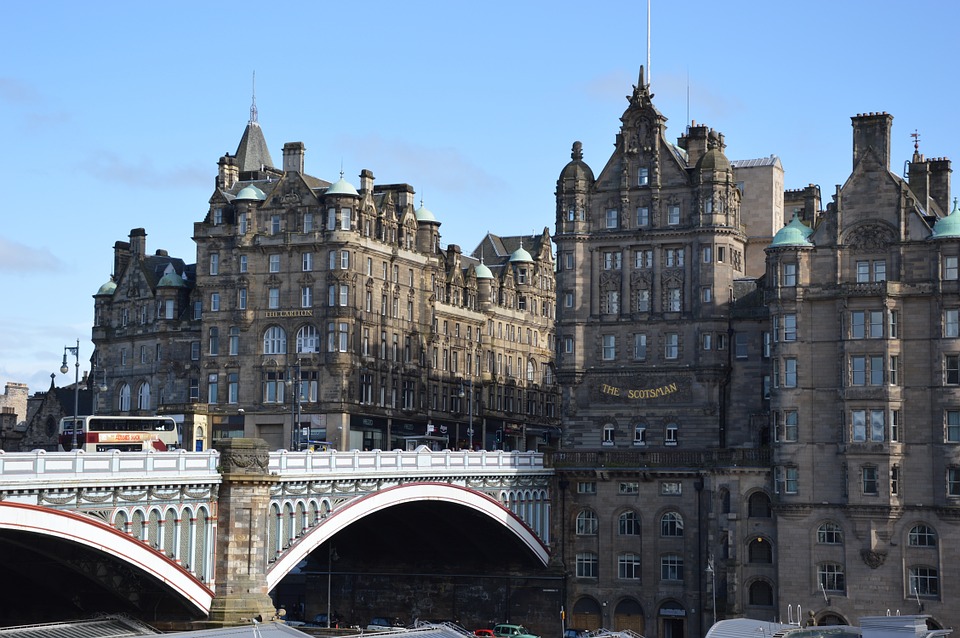
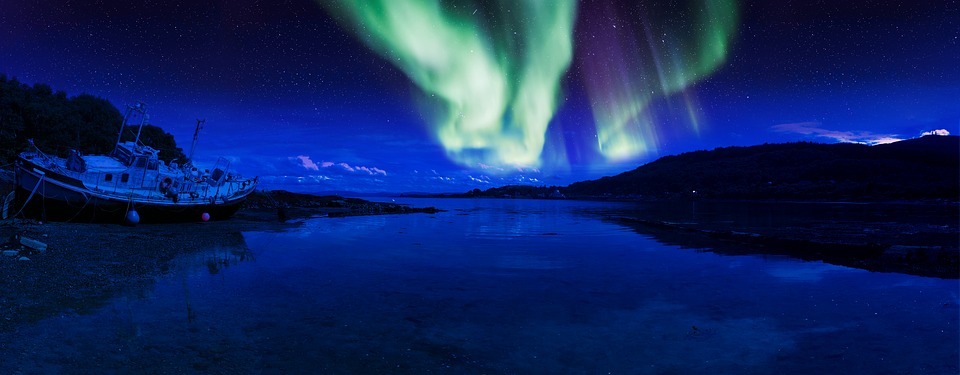
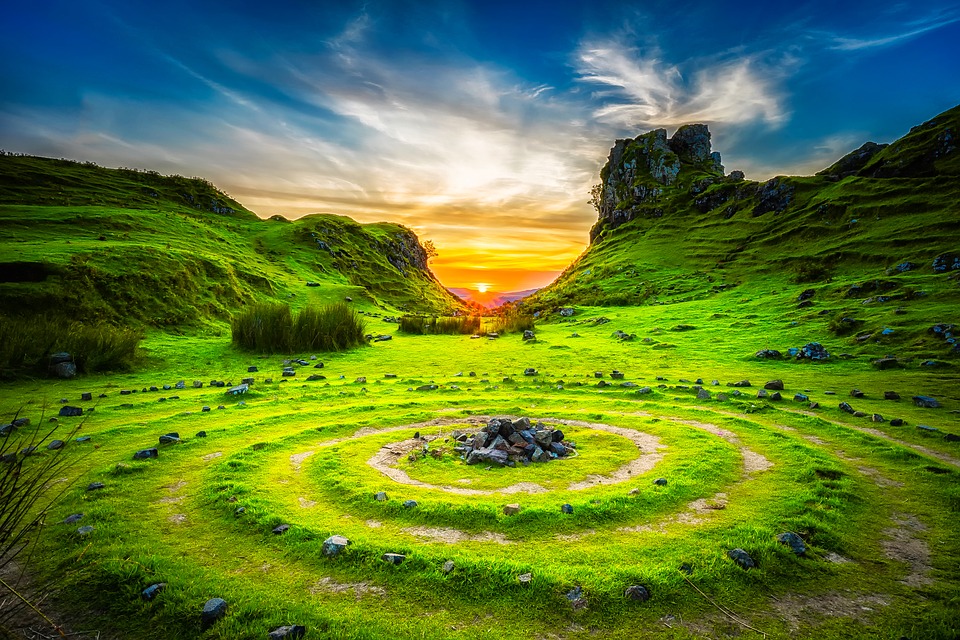
Capital of Scotland: Edinburgh
Population (Estimated 2010): 5,220,000
Area: 127,528km²or 49,239mi2
Currency: Pound Sterling (£)
Official Language: English
Political Information: Constitutional Monarchy and Parliamentary Democracy
Official Religion:No Official Religion
Highest Mountain: Ben Nevis at 1,343m or 4,406ft
GDP Official Exchange Rate (OER is more precise at gauging a countries economic power)
(Estimated 2010): (US$) or 105,548 Million (GBP)
Time Zone (GMT/UTC): GMT
Counties/Provinces/States: 33 Counties; Aberdeenshire, Angus, Argyll, Banffshire, Berwickshire,Caithness, Clackmannanshire, County of Bute, County of Moray, Dumfriesshire, Dunbartonshire, East Lothian, Fife, Inverness-shire, Kincardineshire, Kinross-shire, Kirkcudbrightshire, Lanarkshire, Midlothian, Nairnshire, Orkney, Peeblesshire, Perthshire, Renfrewshire, Ross and Cromarty, Roxburghshire, Selkirkshire, Stirlingshire, Sutherland, West Lothian, Wigtownshire and Zetland (Shetland)
Leaders: H.M. Queen Elizabeth II, with First Minister Nicola Sturgeon.
Additional: Scotland has 790 islands of which only 130 are inhabited.
Sources: CIA World Fact Book, Encyclopaedia Britannica.
Scotland
Scotland, a nation steeped in rich history and vibrant culture, occupies the northern part of the United Kingdom. Renowned for its breathtaking landscapes, from rugged highlands to serene lochs, Scotland offers a unique blend of natural beauty and historical significance. The country is often celebrated for its distinct identity, which is shaped by its Celtic roots, a legacy of ancient clans, and a profound connection to the arts.
With a population of approximately 5.4 million, Scotland is not only a land of stunning vistas but also a hub of innovation and tradition, where the past and present coexist harmoniously. Visitors to Scotland are often captivated by its diverse offerings, ranging from bustling cities like Edinburgh and Glasgow to the tranquil beauty of the Highlands. The capital city, Edinburgh, is particularly famous for its medieval Old Town and elegant Georgian architecture in the New Town, both of which are UNESCO World Heritage Sites.
The annual Edinburgh Festival Fringe, the largest arts festival in the world, showcases the country’s commitment to creativity and performance. As one traverses the landscapes of Scotland, it becomes evident that this nation is not merely a geographical entity but a tapestry woven from centuries of history, culture, and natural splendour.
Summary
- Scotland is a country located in the northern part of the United Kingdom, known for its stunning landscapes, rich history, and vibrant culture.
- The history and culture of Scotland are deeply rooted in traditions such as Highland games, bagpipe music, and the famous Scottish tartan.
- Scotland’s diverse geography includes rugged highlands, deep lochs, and beautiful islands, making it a paradise for outdoor enthusiasts and nature lovers.
- From the iconic Edinburgh Castle to the mysterious Loch Ness, Scotland is home to a wide range of famous attractions and landmarks that draw visitors from around the world.
- Scottish cuisine is known for its hearty and comforting dishes such as haggis, neeps and tatties, and traditional shortbread, offering a unique culinary experience for visitors.
History and Culture of Scotland
A Turbulent Past
The Jacobite uprisings in the 18th century epitomise Scotland’s struggle for autonomy and identity, as clans rallied behind figures like Bonnie Prince Charlie in their quest for independence. This rich historical backdrop has fostered a strong sense of national pride among Scots, who celebrate their heritage through various means, including literature, music, and traditional dress. Scottish culture is characterised by its unique traditions and customs that have been preserved over generations.
Warmth and Hospitality
The Scots are known for their warmth and hospitality, often welcoming visitors with open arms. Traditional music plays a significant role in Scottish culture, with instruments such as the bagpipes and fiddle being emblematic of the nation’s musical heritage. Festivals celebrating Scottish music and dance, such as ceilidhs, are popular across the country.
A Rich Literary Heritage
Additionally, literature has flourished in Scotland, with renowned authors like Robert Burns and Sir Walter Scott leaving an indelible mark on the literary world. The Scots’ love for storytelling is evident in their folklore and legends, which continue to inspire contemporary artists and writers alike.
Geography and Landscapes of Scotland
Scotland’s geography is as diverse as its culture, featuring an array of landscapes that range from towering mountains to picturesque coastlines. The Scottish Highlands are perhaps the most iconic representation of the country’s natural beauty, characterised by rugged terrain, deep valleys, and shimmering lochs. Ben Nevis, the highest peak in the UK, stands majestically at 1,345 metres and attracts hikers from around the globe seeking to conquer its summit.
The Highlands are also home to some of Scotland’s most famous lochs, including Loch Ness, which is shrouded in mystery and legend surrounding its elusive monster. In contrast to the Highlands, the Lowlands offer a different yet equally captivating landscape. This region is marked by rolling hills, fertile farmland, and charming villages that reflect Scotland’s agricultural heritage.
The coastline is dotted with stunning cliffs and sandy beaches, particularly along the west coast and the islands such as Skye and Islay. The Outer Hebrides boast some of the most unspoiled natural environments in Europe, where visitors can experience pristine beaches and unique wildlife. Whether one is exploring the dramatic landscapes of the Highlands or enjoying the tranquillity of the Lowlands, Scotland’s geography provides an endless array of opportunities for outdoor enthusiasts and nature lovers alike.
Famous Attractions and Landmarks in Scotland
Scotland is home to an impressive array of attractions that draw millions of visitors each year. Edinburgh Castle stands as a symbol of Scottish heritage and history; perched atop Castle Rock, it offers panoramic views of the city below. This historic fortress has witnessed numerous sieges and battles throughout its storied past and houses the Honours of Scotland—an impressive collection of royal regalia that includes crowns and sceptres dating back to the 15th century.
The Royal Mile, which stretches from the castle to the Palace of Holyroodhouse, is lined with shops, restaurants, and historic sites that reflect Edinburgh’s vibrant culture. Beyond Edinburgh, other landmarks such as Stirling Castle and the ancient standing stones at Callanish on Lewis provide insight into Scotland’s rich history. The Isle of Skye is renowned for its dramatic landscapes and picturesque villages like Portree, while Loch Ness continues to capture imaginations with its legendary monster.
Additionally, the historic battlefields at Culloden offer a poignant reminder of Scotland’s turbulent past. Each attraction tells a story that contributes to the overall narrative of Scotland’s identity, making it an essential destination for those seeking to understand its heritage.
Scottish Cuisine and Traditional Dishes
Scottish cuisine is a reflection of the country’s agricultural bounty and coastal resources, offering hearty dishes that are both comforting and flavourful. One cannot discuss Scottish food without mentioning haggis—a traditional dish made from sheep’s offal mixed with oats, spices, and suet, all encased in a sheep’s stomach. Often served with neeps (turnips) and tatties (potatoes), haggis is celebrated during Burns Night suppers held in honour of poet Robert Burns.
This dish encapsulates Scotland’s culinary heritage while also showcasing its ability to transform humble ingredients into something truly special. In addition to haggis, Scotland boasts a variety of other traditional dishes that highlight regional flavours. Cullen skink—a creamy smoked haddock soup—is a beloved dish originating from the fishing town of Cullen on the Moray Firth coast.
Another staple is stovies, a comforting one-pot meal made with potatoes and leftover meat that varies from household to household. Scottish shortbread is also famous worldwide for its buttery texture and crumbly consistency; it is often enjoyed with tea or as a sweet treat during festive occasions. The emphasis on local produce extends to whisky production as well; Scotland is renowned for its single malt whiskies that vary significantly by region, each offering distinct flavours influenced by local ingredients and traditions.
Festivals and Events in Scotland
Scotland’s calendar is filled with vibrant festivals that celebrate everything from music and arts to food and culture. One of the most famous events is the Edinburgh Festival Fringe, which takes place every August and showcases thousands of performances across various genres including theatre, comedy, dance, and music. This festival attracts artists from around the world and transforms Edinburgh into a bustling hub of creativity for three weeks each year.
The atmosphere during this time is electric; streets are alive with performers vying for attention while audiences flock to venues large and small to experience new works. Another significant event is Hogmanay—the Scottish New Year celebration—which features street parties, fireworks displays, and traditional music across cities like Edinburgh and Glasgow. The festivities often include singing “Auld Lang Syne,” a song penned by Robert Burns that has become synonymous with New Year celebrations worldwide.
Additionally, local Highland Games take place throughout the summer months in various towns across Scotland; these events celebrate Scottish culture through traditional sports such as caber tossing and tug-of-war while also featuring music and dance competitions. Each festival reflects Scotland’s rich cultural tapestry while providing an opportunity for locals and visitors alike to come together in celebration.
Scottish Wildlife and Nature Reserves
Scotland’s diverse ecosystems support an array of wildlife that captivates nature enthusiasts from around the globe. The country is home to iconic species such as red deer, golden eagles, and puffins that thrive in their natural habitats across various landscapes. The Cairngorms National Park is one of Scotland’s most significant nature reserves; it encompasses vast areas of wilderness where visitors can spot rare wildlife while enjoying activities like hiking or mountain biking.
This park serves as a sanctuary for species such as the elusive Scottish wildcat and capercaillie—a large grouse known for its striking plumage. In addition to terrestrial wildlife, Scotland’s coastal regions offer opportunities for marine life observation. The Hebrides are particularly renowned for their rich biodiversity; here one can encounter seals basking on rocky shores or spot dolphins frolicking in the waters surrounding these islands.
Nature reserves such as RSPB Loch Lomond provide vital habitats for migratory birds while also offering educational programmes aimed at raising awareness about conservation efforts. Whether exploring remote highlands or coastal cliffs teeming with life, visitors to Scotland are sure to be enchanted by its remarkable wildlife.
Travel Tips for Visiting Scotland
When planning a trip to Scotland, there are several practical considerations that can enhance your experience in this captivating country. First and foremost, it is advisable to pack for variable weather conditions; even during summer months, temperatures can fluctuate dramatically throughout the day. Layering clothing is key—bringing waterproof jackets alongside warm sweaters will ensure comfort while exploring both urban areas and rural landscapes alike.
Additionally, investing in sturdy walking shoes will prove beneficial when traversing uneven terrain or embarking on hikes through national parks. Transportation options within Scotland are plentiful; trains connect major cities while buses provide access to more remote areas. Renting a car can also be advantageous for those wishing to explore off-the-beaten-path destinations at their own pace.
It’s worth noting that many attractions offer discounts for advance bookings or family tickets; planning ahead can lead to significant savings during your visit. Lastly, embracing local customs—such as trying traditional dishes or participating in festivals—will enrich your understanding of Scottish culture while creating lasting memories during your journey through this enchanting land.
FAQs
What is Scotland?
Scotland is a country that is part of the United Kingdom. It is located in the northern part of the island of Great Britain and shares a border with England to the south.
What is the capital of Scotland?
The capital of Scotland is Edinburgh, which is known for its historic and cultural attractions, including Edinburgh Castle and the annual Edinburgh Festival.
What is the official language of Scotland?
The official languages of Scotland are English and Scottish Gaelic. English is the most widely spoken language, while Scottish Gaelic is spoken by a small percentage of the population, mainly in the Highlands and Western Isles.
What are some famous landmarks in Scotland?
Some famous landmarks in Scotland include Edinburgh Castle, Loch Ness, the Isle of Skye, the Scottish Highlands, and the historic city of Stirling.
What is the climate like in Scotland?
Scotland has a temperate maritime climate, with mild winters and cool summers. The weather can be unpredictable, with frequent rainfall and changeable conditions.
What are some traditional Scottish foods?
Traditional Scottish foods include haggis, neeps and tatties (turnips and potatoes), Scotch broth, and shortbread. Scotland is also known for its whisky and ales.
What are some popular activities for tourists in Scotland?
Popular activities for tourists in Scotland include visiting historic castles and landmarks, exploring the scenic countryside, hiking in the Highlands, and participating in outdoor activities such as golfing, fishing, and wildlife watching.
Terrain and Topography of Scotland: mountains, valleys, and plains.
Scotland, a land steeped in history and natural beauty, boasts a diverse and dramatic terrain that has shaped its culture, economy, and way of life. The country’s topography is characterised by a striking contrast between rugged mountains, serene valleys, expansive plains, and a rugged coastline. This varied landscape not only contributes to Scotland‘s breathtaking scenery but also plays a crucial role in the ecological balance of the region. From the towering peaks of the Highlands to the gentle undulations of the Lowlands, Scotland’s terrain is a testament to the forces of nature that have sculpted it over millennia. The interplay of geological processes, climatic conditions, and human activity has resulted in a unique environment that continues to captivate both residents and visitors alike. The geographical diversity of Scotland is further enhanced by its numerous islands, each with its own distinct character and topographical features. The Hebrides, Orkney, and Shetland Islands are just a few examples of how Scotland’s terrain extends beyond the mainland, offering a rich tapestry of landscapes that range from windswept moors to dramatic cliffs. This intricate mosaic of landforms not only provides a habitat for a wide variety of flora and fauna but also influences the cultural identity of the regions they inhabit. As we delve deeper into the various aspects of Scotland’s terrain, we will uncover how these natural features have shaped the lives of its people and continue to play a vital role in the nation’s identity. Summary Scotland’s terrain is diverse, ranging from mountains and valleys to vast plains. The majestic mountains of Scotland, including Ben Nevis, offer stunning views and challenging hikes...
Climate Zones of Scotland: Different climate regions Of Scotland
Scotland, a land of breathtaking landscapes and rich cultural heritage, is characterised by a diverse range of climate zones that contribute to its unique environmental tapestry. The geographical positioning of Scotland, with its rugged highlands, rolling lowlands, extensive coastlines, and numerous islands, creates a complex interplay of climatic conditions. This variability is influenced by several factors, including latitude, altitude, and proximity to the Atlantic Ocean. As a result, Scotland experiences a wide array of weather patterns, from the temperate and often rainy conditions of the west coast to the drier and colder climates found in the north and east. Understanding these climate zones is essential for appreciating the ecological diversity and the lifestyle adaptations of the Scottish people. The climate zones of Scotland can be broadly categorised into several distinct areas, each with its own characteristics and weather patterns. These zones include the Highland Climate Zone, the Lowland Climate Zone, the Coastal Climate Zone, the Island Climate Zone, the Urban Climate Zone, the Mountainous Climate Zone, and the Northern Climate Zone. Each of these regions presents unique challenges and opportunities for agriculture, tourism, and habitation. By exploring these various climate zones in detail, one can gain insight into how Scotland’s environment shapes its culture, economy, and natural beauty. This article aims to delve into each of these climate zones, highlighting their defining features and the impact they have on both the landscape and the lives of those who inhabit them. Summary Scotland has a diverse range of climate zones, each with its own unique characteristics and weather patterns. The Highland climate zone is characterized by cooler temperatures, higher rainfall,...
History of Scotland
The history of Scotland is steeped in a rich tapestry of early settlements and the formation of kingdoms that laid the groundwork for its distinct cultural identity. Archaeological evidence suggests that human habitation in Scotland dates back to the Mesolithic period, around 8000 BC, when hunter-gatherers roamed the land. These early inhabitants left behind traces of their existence in the form of tools and remnants of their camps, particularly in areas such as the Orkney Islands and the Western Isles. As time progressed, the Neolithic period saw the advent of agriculture, leading to more permanent settlements. The construction of megalithic structures, such as the famous standing stones at Callanish and the burial mounds at Maeshowe, indicates a society that was beginning to develop complex social structures and spiritual beliefs. By the early medieval period, Scotland was home to several distinct kingdoms, including the Picts in the north and east, the Scots in the west, and the Angles in the south. The Picts, known for their enigmatic stone carvings and warrior culture, played a significant role in shaping early Scottish identity. The unification of these kingdoms began in earnest during the reign of Kenneth MacAlpin in the 9th century, who is often credited with founding the Kingdom of Scotland. This unification was not merely a political manoeuvre; it represented a melding of cultures and traditions that would influence Scotland’s development for centuries to come. The establishment of Christianity during this period further solidified these early kingdoms, as monasteries became centres of learning and culture, fostering a sense of shared identity among the diverse peoples of Scotland. Summary Early settlements in...
Political Boundaries of Scotland: Provinces, Districts, or Historical Boundaries.
Scotland, a nation steeped in rich history and cultural heritage, is defined not only by its stunning landscapes and vibrant traditions but also by its political boundaries. These boundaries have evolved over centuries, shaped by a myriad of factors including historical events, social movements, and economic changes. The delineation of Scotland‘s political landscape is crucial for understanding its governance, identity, and the relationship it maintains with the rest of the United Kingdom. As a distinct entity within the UK, Scotland’s political boundaries are not merely lines on a map; they represent the aspirations and struggles of its people throughout history. The political boundaries of Scotland are significant in various contexts, from administrative governance to cultural identity. They influence how resources are allocated, how communities are represented, and how policies are implemented. The complexity of these boundaries reflects the diverse nature of Scottish society, which encompasses a range of languages, traditions, and regional identities. As Scotland continues to navigate its place within the UK and the broader European context, understanding the historical and contemporary significance of its political boundaries becomes increasingly important. Summary Scotland’s political boundaries have evolved over time, shaping the country’s administrative divisions and local government areas. The historical boundaries of Scotland have deep origins and significance, reflecting the country’s rich and complex history. Scotland is divided into administrative provinces, each with its own unique characteristics and significance in the country’s political landscape. The local government areas in Scotland, known as districts, play a crucial role in governing and managing local affairs. The debate over Scotland’s political boundaries continues to be a topic of discussion, reflecting the ongoing...
Population Density of Scotland
Population density is a critical demographic measure that reflects the number of individuals living per unit area, typically expressed in persons per square kilometre. In Scotland, this figure is not merely a statistic; it encapsulates the intricate relationship between people and their environment, influencing everything from urban planning to resource allocation. As of the latest census data, Scotland‘s population density stands at approximately 68 people per square kilometre, a figure that masks significant regional variations. The central belt, which includes cities like Glasgow and Edinburgh, boasts a much higher density compared to the more sparsely populated Highlands and Islands. This disparity highlights the diverse living conditions and lifestyles across the nation, making the study of population density in Scotland both fascinating and essential for understanding its socio-economic landscape. The implications of population density extend beyond mere numbers; they shape the cultural, economic, and environmental fabric of Scottish society. High-density areas often experience unique challenges such as housing shortages, increased traffic congestion, and heightened demand for public services. Conversely, low-density regions may struggle with issues like economic stagnation and limited access to essential services. Understanding these dynamics is crucial for policymakers and planners who aim to create sustainable communities that cater to the needs of their residents while preserving Scotland’s rich heritage and natural beauty. As we delve deeper into the factors influencing population density in Scotland, it becomes evident that this topic is not only relevant but also vital for the future of the nation. Summary Scotland has a population density of 70 people per square kilometre, making it one of the most sparsely populated countries in Europe. Factors...
Natural Resources of Scotland: Where Natural Resources are located In Scotland
Scotland, a land of breathtaking landscapes and rich cultural heritage, is endowed with an abundance of natural resources that have shaped its economy and way of life for centuries. From the rugged Highlands to the serene lochs, the diverse geography of Scotland provides a wealth of resources that are not only vital for local communities but also contribute significantly to the broader UK economy. The interplay between Scotland’s natural environment and its human activities has fostered a unique relationship, where the sustainable management of these resources is paramount for future generations. As the world increasingly turns its attention to sustainability and environmental stewardship, Scotland stands at the forefront, leveraging its natural assets while striving to protect them. The significance of Scotland’s natural resources extends beyond mere economic value; they are integral to the cultural identity and heritage of the nation. The landscapes that define Scotland are not just picturesque; they are also repositories of biodiversity and ecosystems that have evolved over millennia. The interplay between land, water, and climate has created a unique tapestry of habitats that support a wide array of flora and fauna. As we delve deeper into the various natural resources found in Scotland, it becomes evident that their sustainable management is crucial not only for economic prosperity but also for preserving the ecological balance and cultural legacy that Scotland embodies. Summary Scotland is rich in natural resources, including water, renewable energy sources, agriculture, forestry, minerals, and diverse wildlife. Scotland’s water resources are abundant, with numerous rivers, lochs, and reservoirs providing clean and reliable water for various uses. The country is a leader in renewable energy,...
Cultural or Historical Sites of Scotland: Important Cultural Landmarks or Historical Sites In Scotland
Scotland, a land steeped in rich history and vibrant culture, boasts an array of cultural and historical sites that reflect its tumultuous past and diverse heritage. From ancient stone circles to grand castles, the landscape is dotted with remnants of bygone eras, each telling a unique story that contributes to the national identity. The interplay of natural beauty and historical significance makes Scotland a captivating destination for both locals and tourists alike. The country’s cultural tapestry is woven from the threads of Celtic traditions, Viking invasions, and the struggles for independence, all of which are vividly illustrated through its architectural marvels and archaeological treasures. Exploring Scotland’s historical sites offers a glimpse into the lives of those who shaped the nation. Each location serves as a testament to the resilience and creativity of the Scottish people, showcasing their ability to adapt and thrive amidst challenges. From the rugged Highlands to the serene Lowlands, the sites are not merely relics of the past; they are living monuments that continue to inspire and educate. As we delve into some of Scotland’s most iconic cultural landmarks, we will uncover the stories behind these sites, revealing how they have influenced Scotland’s identity and continue to resonate with visitors today. Summary Scotland is home to a rich tapestry of cultural and historical sites, each with its own unique story to tell. Edinburgh Castle stands as a powerful symbol of Scotland’s history and its enduring strength. The Isle of Skye offers visitors a breathtaking blend of natural beauty and ancient history, with its stunning landscapes and historic sites. The Callanish Stones in the Outer Hebrides continue...




